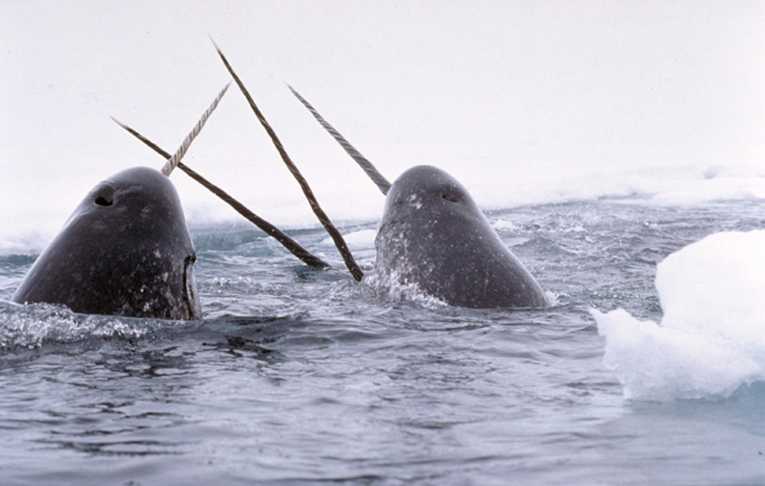Animal oceanographers - Narwhals used to explore frozen arctic waters, reporting under ice temperatures
Narwhals are being used to explore the waters under the frozen arctic ocean and report in on under ice winter temperatures previously only possible using costly icebreaker cruises or helicopter charters, filling a vital hole in climate data for the rapidly warming region.
Tusked narwhals have been equipped by scientists with electronic sensors about the size of a pack of cards that measure temperature and depth as the creatures go about their dives almost 1800 metres or over a mile down in their search for greenland halibut. Data is uploaded to satellites when the animals surface to breathe.
"The whales can give us data that only the most expensive and sophisticated oceanographic instruments can duplicate," says Dr Kristin Laidre of University of Washington's Polar Science Centre, "they are diving repeatedly to the bottom, all year round." Results from the whales confirm a warming trend in these icy waters of almost 1 degree C.
But catching a five metre (16 foot) whale in a small rubber boat is not easy. Nets are set and monitored twenty four hours a day. Once a whale is caught, it is brought to the surface between two inflatable boats and placed in a sling.
"We essentially wait and hope that we catch one and many times we don't. When we catch one, we bring the whale to the surface so we basically have the whale next to our boat and then we lean over the side of the boat and attach the tag and then release the animal." Attaching the tags does not harm the whales. Fourteen narwhals armed with temperature sensors have transmitted data.
Other animals have been recruited to gather oceanographic data, elephant seals in the Antarctic, and beluga whales in Svalbard have helped out scientists before, but this is the first time that narwhals have been involved.
The information gained will help climatologists further refine their climate predictive models of the key area between Greenland and Canada where the world's largest populations of narwhal live. The area is important to climate modellers trying to predict the effect of freshwater influx from the melting Greenland icecap.
href="https://earthtimes.org/environment/whales/index.html">Whales /









